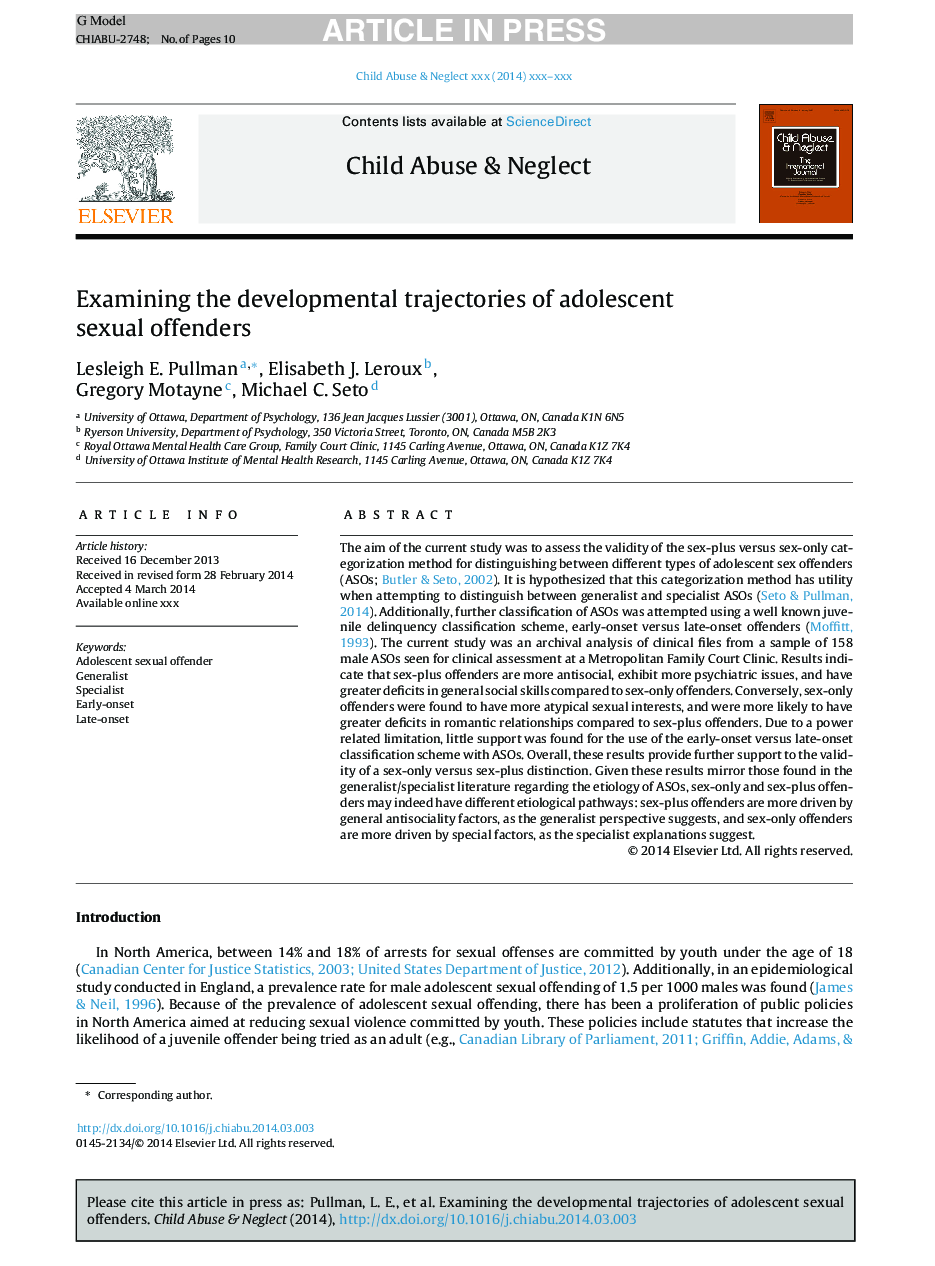| کد مقاله | کد نشریه | سال انتشار | مقاله انگلیسی | نسخه تمام متن |
|---|---|---|---|---|
| 10310713 | 617445 | 2014 | 10 صفحه PDF | دانلود رایگان |
عنوان انگلیسی مقاله ISI
Examining the developmental trajectories of adolescent sexual offenders
ترجمه فارسی عنوان
بررسی مسیرهای توسعه جنایتکاران نوجوان
دانلود مقاله + سفارش ترجمه
دانلود مقاله ISI انگلیسی
رایگان برای ایرانیان
کلمات کلیدی
جنایتکار نوجوان سرپرست متخصص، آغاز زودرس، تأخیر
موضوعات مرتبط
علوم پزشکی و سلامت
پزشکی و دندانپزشکی
پریناتولوژی (پزشکی مادر و جنین)، طب اطفال و بهداشت کودک
چکیده انگلیسی
The aim of the current study was to assess the validity of the sex-plus versus sex-only categorization method for distinguishing between different types of adolescent sex offenders (ASOs; Butler & Seto, 2002). It is hypothesized that this categorization method has utility when attempting to distinguish between generalist and specialist ASOs (Seto & Pullman, 2014). Additionally, further classification of ASOs was attempted using a well known juvenile delinquency classification scheme, early-onset versus late-onset offenders (Moffitt, 1993). The current study was an archival analysis of clinical files from a sample of 158 male ASOs seen for clinical assessment at a Metropolitan Family Court Clinic. Results indicate that sex-plus offenders are more antisocial, exhibit more psychiatric issues, and have greater deficits in general social skills compared to sex-only offenders. Conversely, sex-only offenders were found to have more atypical sexual interests, and were more likely to have greater deficits in romantic relationships compared to sex-plus offenders. Due to a power related limitation, little support was found for the use of the early-onset versus late-onset classification scheme with ASOs. Overall, these results provide further support to the validity of a sex-only versus sex-plus distinction. Given these results mirror those found in the generalist/specialist literature regarding the etiology of ASOs, sex-only and sex-plus offenders may indeed have different etiological pathways: sex-plus offenders are more driven by general antisociality factors, as the generalist perspective suggests, and sex-only offenders are more driven by special factors, as the specialist explanations suggest.
ناشر
Database: Elsevier - ScienceDirect (ساینس دایرکت)
Journal: Child Abuse & Neglect - Volume 38, Issue 7, July 2014, Pages 1249-1258
Journal: Child Abuse & Neglect - Volume 38, Issue 7, July 2014, Pages 1249-1258
نویسندگان
Lesleigh E. Pullman, Elisabeth J. Leroux, Gregory Motayne, Michael C. Seto,
